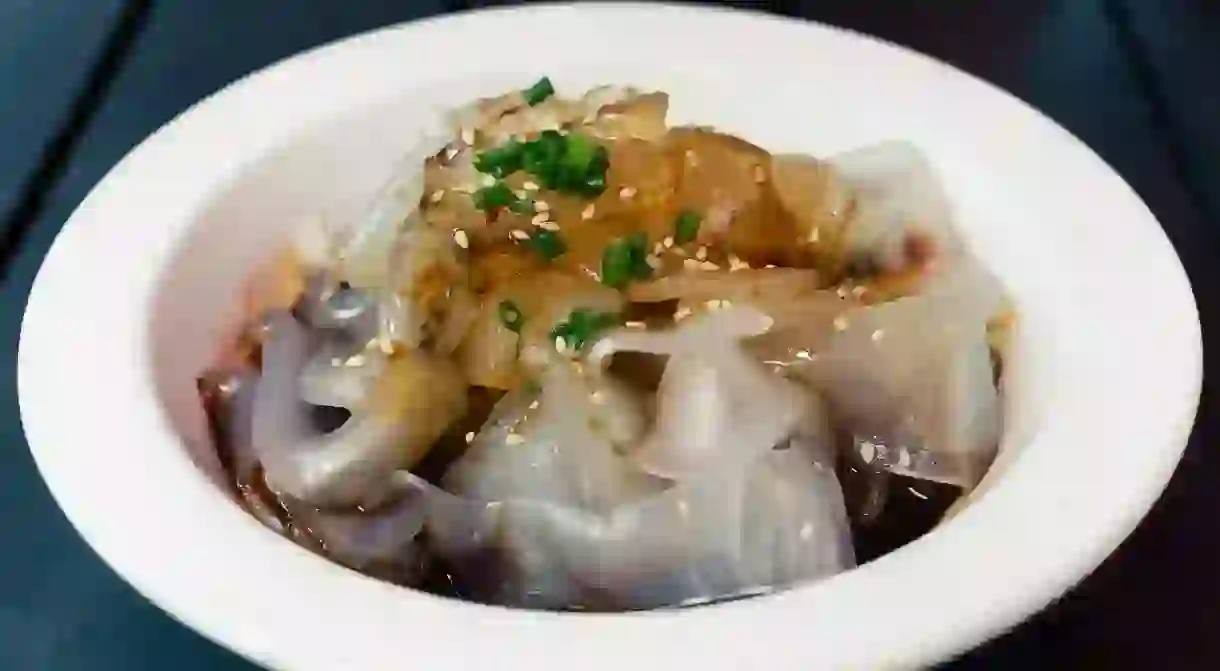Why Jellyfish Is on Everyone's Plate in New Zealand

What do you do when your home country experiences a jellyfish invasion? A New Zealand chef with a strong environmental conscience is leveraging his culinary skills to plate up a viable solution.
Jacob Brown is the award-winning chef of The Larder in Wellington. Since opening the popular restaurant with wife Sarah Bullock, he has earned a reputation for converting Kiwi taste buds to seemingly unpalatable foods – think grilled kangaroo burgers, elk heart, or sea urchin ice cream.
A couple of years ago, Brown decided to add jellyfish to his highly-experimental repertoire. The move was partly inspired by the increasing numbers of jellyfish washing up on New Zealand’s shores – a phenomenon widely attributed to warmer sea temperatures and a decline in traditional predators like tuna – and also because of the growing public demand for more sustainable protein options.
Brown recently told the Guardian that he currently sells some 150 jellyfish meals per week, using the marine species alongside popular food items like whitebait, pork, chicken, as well as including it in omelettes.
“I use it as a secondary seafood to complement other seafoods. The human race is overfishing our oceans and we have an abundance of jellyfish and I think we should be eating them rather than just eating the premium fish which are endangered, such as tuna.”
The kicker? Brown is not allowed to sell local jellyfish at his restaurant – instead, he has to import it from South Korea. Restrictions imposed by New Zealand’s Ministry of Primary Industries means that, while it’s perfectly legal for someone to harvest local species for personal consumption, commercial eateries aren’t allowed to do the same.
Despite these barriers, Brown hopes that the growing popularity for the seafood will change this and people’s viewpoints about eating different marine species.
“I think it is crazy and small-minded that we are happy to eat a cow that is in some respects quite a dirty animal, but we have this really clean protein that just flows through the ocean like a sea-plant. To me it makes more sense to be eating jellyfish than live animals.”

Plating up some jellyfish
Jellyfish has been a cuisine staple in Asian countries for many generations. In China, it is commonly used in salads; the Japanese occasionally serve it as sushi; and in Thailand jellyfish are usually prepared in the form of a noodle. The Western world has only turned its attention to the species in recent years, as the effects of over-fishing, pollution and climate change started taking a toll on popular seafood staples.
For the epicurious among us, jellyfish is said to have a mild flavour with very little variation among different species. Texture is one of the biggest parts of their appeal – despite their name, jellyfish are known for being crunchy with a gelatinous feel. Some people compare the taste to that of fresh squid, while others liken it to cucumbers.
Various species are edible – provided the tentacles are removed and the dish is prepared properly. Moon jellyfish are among the most common types in the Western world, though they’re not traditionally used in Asia. Other widely used varieties include cannonball jellyfish and Nomuras Jellyfish, the latter of which is can reach a weight of up to 200 kilos.
Because freshly-caught jellyfish spoil easily at room temperature, preparation begins the moment they’ve been caught – and in many cases, while they’re still alive. Traditionally, jellyfish are immersed in a saltwater solution, which gives them their textural feel, and are subsequently soaked in water overnight before being shredded.














